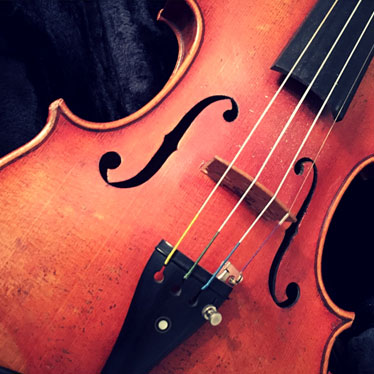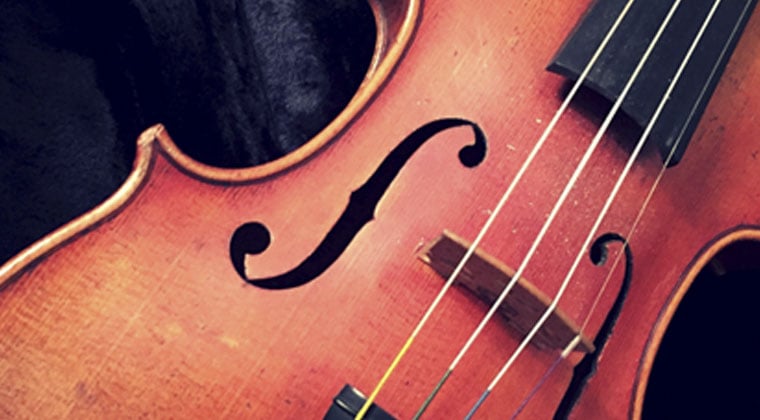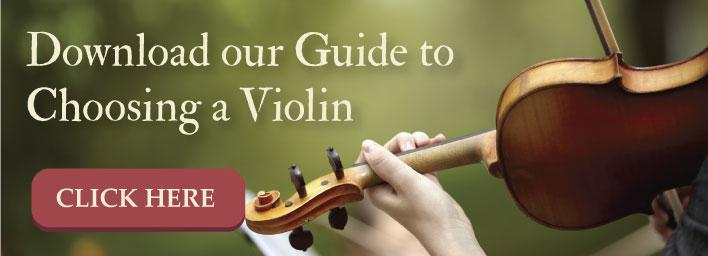How Can I Help Parents Choose The Best Violin For Their Child?

 As a music instructor, you know how difficult it can be when you have to spend a large amount of class time adjusting, fixing, and dealing with instrument “issues.” Violins are notorious for having a range of qualities that can make purchasing decisions confusing and overwhelming for parents; and often your students will be equipped with inferior violins and bows that make it difficult to teach tem effectively simply because their parents didn’t know how to properly select a good instrument.
As a music instructor, you know how difficult it can be when you have to spend a large amount of class time adjusting, fixing, and dealing with instrument “issues.” Violins are notorious for having a range of qualities that can make purchasing decisions confusing and overwhelming for parents; and often your students will be equipped with inferior violins and bows that make it difficult to teach tem effectively simply because their parents didn’t know how to properly select a good instrument.
Stress Value
Just because a violin is inexpensive, doesn’t mean that it will offer a good value. Indeed, if you and your student have to constantly struggle to keep it in tune or find the right tonal pitch, the wasted time means that your child isn’t learning how to play the violin—they’re learning how to repair it. Moreover, a poorly built instrument often requires frequent trips to the luthier for re-gluing, and the materials used can have greater susceptibility to changes in temperature and humidity, which means that costly cracks and other expensive fixes are more likely.
By stressing the value factor, you can help parents understand the importance of a quality crafted violin, and how the initial cost will translate into long-term savings.
Focus on Craftsmanship and Materials
Parents want to know exactly what to look for when buying or renting a violin for their student musician. With violins, a clear-cut check list is difficult to determine because of the artisan nature of the instrument. But, you can outline some basics that will help clarify their decision. Have parents look for:
- Symmetrical Construction—an imaginary line from the tip of the middle of the scroll down to the nut should bisect two identical mirror images. If the neck is crooked, or the body, pegs, strings, or fingerboard looks out of alignment, these are signs that the violin isn’t a good choice.
- Tight Connections—by gently applying pressure to the table (top) and sides (ribs) of the violin, you shouldn’t hear any creaking or squeaks.
- Solid Wood—many inferior violins will feature veneers or utilize woods that have poor resonance qualities. And although most violins feature lap joints on the table and back of the instrument (which is totally normal), instruct parents to look for instruments crafted from solid Spruce and Maple wood. Ebony pegs, fingerboards, and chin rests are other indicators of a good quality violin.
- Scroll Work—although not always a key indicator, looking at the design on the scroll can provide insights into the quality of a violin. Typically, a more intricate design designates superior quality. Have parents look for carving that gives the scroll a lovely appearance and shape.
Sound
Before buying a violin, parents should listen to the instrument being played. Just because something looks good, doesn’t mean that it will sound that way, so it’s a good idea to have parents ask for a demonstration at the instrument shop. If possible, have them take along another violinist who can play a few bars on the violin while they listen for tinny sounds, projection and tonal quality. You may even want to arrange a time each month when you’ll be available to meet with students at a local dealer’s shop to help make the selection.
Offer a Trusted Brand
A violin that has been crafted with quality materials and fitted out by a professional luthier can help beginning students sound better, and make your ensembles sound super. But, parents need to balance financial demands with their child’s musical inclination. A poor sounding instrument will discourage the student and possibly lead to students defecting from the program, which would be a terrible shame.
By offering a quality-crafted, brand name violin, you can help solidify your music program’s success and encourage life-long playing enjoyment in your students. Revelle offers exceptional instruments that provide splendid sound by using the best tonewoods and a hands-on fitting out process. Outfits start at around $500 and include a hard case, carbon-fiber bow, and a quality built violin so you can feel good about recommending a Brand that will offer long-term value and listening pleasure.


